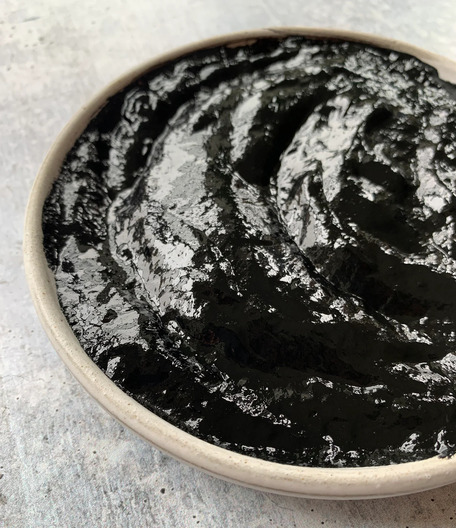The term Sepia is commonly used to refer to the cuttlefish, a fascinating cephalopod mollusk known for its intelligence, complex behavior, and ink production. But why is this creature called Sepia? The answer lies in both historical and linguistic origins, which connect the species to both its unique characteristics and its use throughout history.

In this article, we will explore the reasons behind the name "Sepia" and its association with cuttlefish, examining the history, the scientific background, and how these terms have evolved over time.
The name "Sepia" is most commonly used to refer to the cuttlefish due to historical and linguistic associations. Sepia is derived from the Greek word "sēpia," which refers to the genus of the cuttlefish, Sepia, a name that has been used for centuries. In fact, the word "sepia" has a deep historical connection with the cuttlefish, and here's why:
Scientific Classification: The genus name Sepia refers to a specific type of cephalopod within the cuttlefish family. These animals are marine mollusks that are known for their unique cuttlebone, ink production, and ability to change color. The name Sepia was assigned to these creatures as early as the 18th century, when scientists first categorized them.
Inky Connection: The term "sepia" is also strongly linked to the ink produced by cuttlefish, which historically was used as a natural ink source for writing and drawing. The ink is a rich brown-gray color, which is referred to as "sepia" ink. This inky trait became synonymous with the animal itself.
The name Sepia became even more widely recognized because of its association with the ink produced by cuttlefish. This ink was historically harvested and used by artists for centuries. The dark brown or reddish-brown color of the ink is known as sepia and became a popular ink for drawing and writing.

Historical Use of Sepia Ink: In ancient times, the ink from cuttlefish was used by artists and writers, particularly in Greek and Roman civilizations, for its durable and rich pigmentation. As a result, the term sepia not only referred to the creature itself but also became synonymous with the ink color.
Artistic Medium: During the Renaissance and in the 19th century, sepia ink was used for sketching and creating detailed drawings, especially in watercolor. The sepia tone became a favorite for artists, creating works that had a warm, earthy aesthetic.
The cuttlefish itself is a marine animal closely related to the squid and octopus. They are highly intelligent creatures that exhibit a remarkable ability to change color and texture, using special cells in their skin called chromatophores. Cuttlefish are found in oceans worldwide and are known for their distinctive cuttlebone, which is a unique internal shell used for buoyancy.
Anatomy of the Cuttlefish: The cuttlefish has eight arms and two longer feeding tentacles, which it uses to capture prey. It also possesses a large, complex brain, making it one of the most intelligent invertebrates in the ocean.
Behavioral Traits: These creatures are also known for their camouflage abilities, using a combination of color change and texture modification to blend into their surroundings. This ability helps them evade predators and capture prey in their environment.
The term Sepia comes from ancient Greek, where "sēpia" referred to the cuttlefish, particularly because of the ink the animal produces. This ink became widely used in ancient writing and artwork. Over time, the name "Sepia" extended to describe both the animal and the ink color, reinforcing the connection between the two.
Greek Influence: The word sepia is derived from the Greek word for cuttlefish, "sēpia," and it has remained a constant term for this animal in many languages.
Language and Usage: In modern English, sepia has evolved into a term that not only refers to the cuttlefish but also to the characteristic color of the ink. When people refer to the "sepia" tone, they are often referencing the brownish tint of the cuttlefish ink, which is still used in art, photography, and design today.
The term "cuttlefish" is another name for the animal, but it doesn’t have the same direct historical or color association as sepia. The word cuttlefish is derived from the Old English word cuddefish or cuddefisc, where "cuddle" likely refers to the creature's rounded, soft body. While "cuttlefish" is still a common name used today, sepia remains the more scientifically recognized term when discussing the genus of these animals.
Cuttlefish vs. Sepia: The main difference lies in how the names are used. Cuttlefish is the more common term, used broadly for the species, while Sepia is more often associated with the genus and the ink produced by the creature. The name Sepia emphasizes its artistic and cultural history, while "cuttlefish" highlights its biological characteristics.
The name Sepia is deeply ingrained in both the scientific classification and historical use of the cuttlefish, especially due to its distinctive ink. From ancient Greece to modern times, the cuttlefish has been synonymous with the rich, brownish pigment used in art, which has led to the species being called Sepia for centuries. Understanding the history and significance of the name helps us appreciate not only the creature itself but also its cultural and artistic legacy.
What is the Difference Between Cuttlefish, Squid, and Octopus?
How Cuttlefish Ink is Used in Art and Science
Amazing Facts About Cuttlefish Camouflage
By exploring the historical connections between the name Sepia and the cuttlefish, we uncover a fascinating relationship that ties biology, art, and culture together. The next time you hear the term Sepia, you'll not only think of the inky pigment but also of the remarkable cephalopod behind the name.
animal tags: Sepiina
We created this article in conjunction with AI technology, then made sure it was fact-checked and edited by a Animals Top editor.